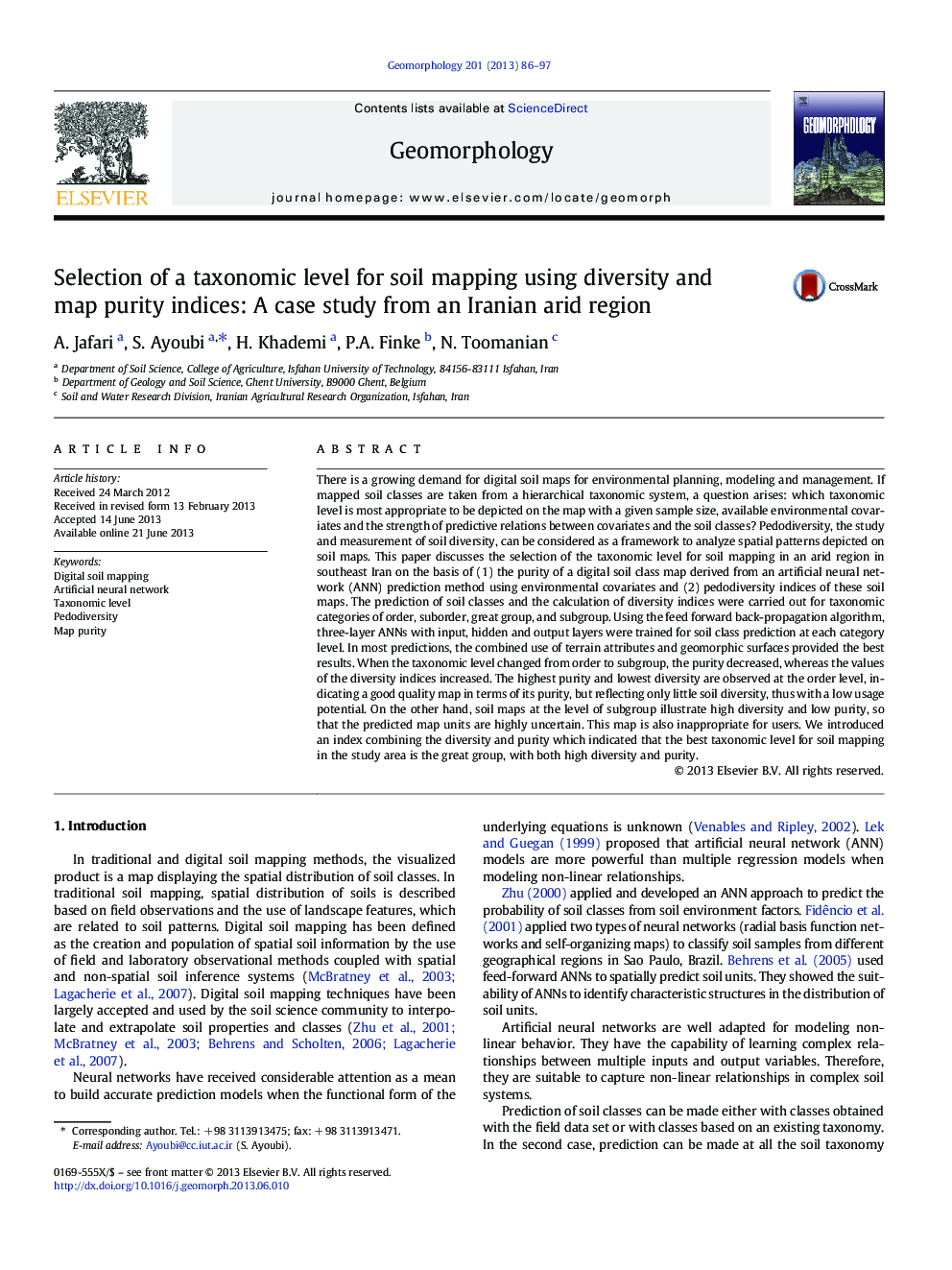| کد مقاله | کد نشریه | سال انتشار | مقاله انگلیسی | نسخه تمام متن |
|---|---|---|---|---|
| 6432632 | 1635448 | 2013 | 12 صفحه PDF | دانلود رایگان |
- Soil map purity is affected by soil diversity opposing trend from order to subgroup.
- Higher soil diversity is achieved with greater density of different soil units.
- Combined index shows that the best category for soil mapping was great group.
- Sampling density is a key factor in determining of spatial variations of entropy.
There is a growing demand for digital soil maps for environmental planning, modeling and management. If mapped soil classes are taken from a hierarchical taxonomic system, a question arises: which taxonomic level is most appropriate to be depicted on the map with a given sample size, available environmental covariates and the strength of predictive relations between covariates and the soil classes? Pedodiversity, the study and measurement of soil diversity, can be considered as a framework to analyze spatial patterns depicted on soil maps. This paper discusses the selection of the taxonomic level for soil mapping in an arid region in southeast Iran on the basis of (1) the purity of a digital soil class map derived from an artificial neural network (ANN) prediction method using environmental covariates and (2) pedodiversity indices of these soil maps. The prediction of soil classes and the calculation of diversity indices were carried out for taxonomic categories of order, suborder, great group, and subgroup. Using the feed forward back-propagation algorithm, three-layer ANNs with input, hidden and output layers were trained for soil class prediction at each category level. In most predictions, the combined use of terrain attributes and geomorphic surfaces provided the best results. When the taxonomic level changed from order to subgroup, the purity decreased, whereas the values of the diversity indices increased. The highest purity and lowest diversity are observed at the order level, indicating a good quality map in terms of its purity, but reflecting only little soil diversity, thus with a low usage potential. On the other hand, soil maps at the level of subgroup illustrate high diversity and low purity, so that the predicted map units are highly uncertain. This map is also inappropriate for users. We introduced an index combining the diversity and purity which indicated that the best taxonomic level for soil mapping in the study area is the great group, with both high diversity and purity.
Journal: Geomorphology - Volume 201, 1 November 2013, Pages 86-97
